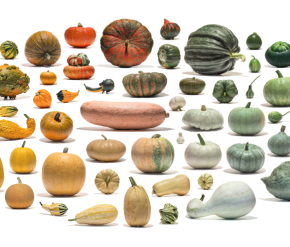Food in New York Introduction

What we eat is one of the most important decisions we make every day.
Food connects us—to each other, to our culture, and ultimately to nature, shaping the world we live in. We depend on food to survive, and food also gives us pleasure, stirs memories, feeds emotions, and builds community. Yet some of the biggest issues we face globally—from the climate crisis to public health and workers’ rights—are inseparable from how and what we eat. And as the distance between field and fork widens, many of us feel detached from our food, often not knowing where it came from or how it was produced.
In a place like New York City, behind every tempting package of processed food from the corner bodega, every carton of fresh strawberries from a street cart, and every enticing restaurant meal lies an intricate, massive, and changing network of relationships. Food in New York: Bigger Than the Plate examines the history of our city’s overlapping food systems, outlines some of their most urgent challenges, and showcases the work of artists, designers, activists, and people like you who are thinking creatively about how to shape the future of food beyond the plate.
Prologue
The Native populations of what today we call New York City inhabited an abundant landscape.
The Lenape ate a varied diet, with white-tailed deer, berries of all kinds, oysters, black bear, salmon, lobsters, wild turkeys, sturgeon, and beavers all part of their regular menu. Their main condiment was the raw animal fat from the diverse animals they hunted. They boiled their soups and stews with heated rocks in light-weight earthen vessels that could not withstand high fire temperatures.
Although the Lenape did grow the “three sisters” (squash, maize, and beans), the natural environment of the area was so plentiful that their agriculture was not intensive, unlike in other places in the Americas. The Hudson River was their most important resource, contributing to a remarkably well-spread-out year-round food supply.
These foodways changed radically in the 1600s, when European invaders began tilting the area’s economy towards fur-trading. European wares, like iron pans and kettles, not only altered the way foods were prepared but also made the Native people less able to migrate seasonally because of their weight. Trading also changed the Lenapes’ relationship with the land and its resources, as hunting for fur supplanted traditional self sufficiency. As Europeans settlements expanded, Native people lost access to land, irreparably changing their foodways and their cultures.
Markley Boyer / The Mannahatta Project / Wildlife Conservation Society
Manahatta seen from above Brooklyn, looking to the north
2009
Reproduction
Courtesy of Markley Boyer / The Mannahatta Project / Wildlife Conservation Society
Scientists involved in The Mannahatta Project created this computer-generated artistic rendering of the island of Manhattan as it probably looked before contact.
Exhibition Sections
Food in New York: Online
Return to the online exhibition page.
Food in New York: Trading
Continue on to view gallery content focused on "Trading."


